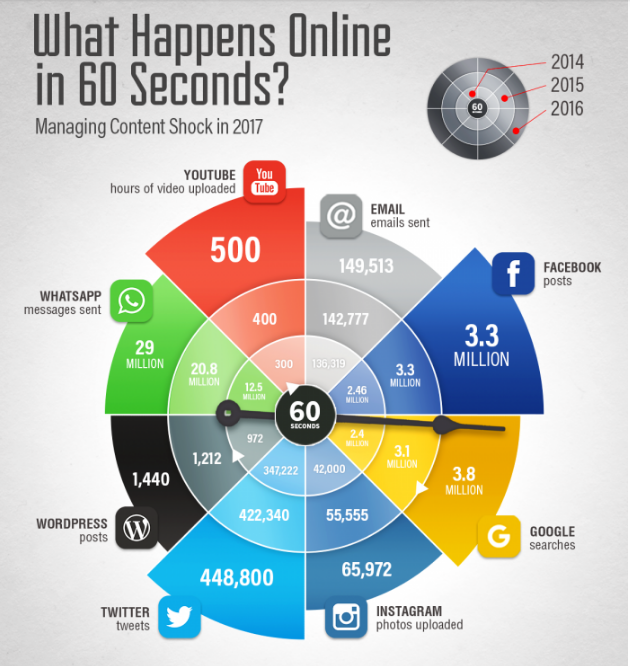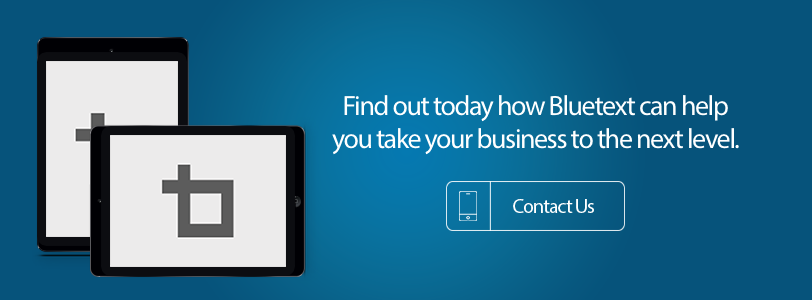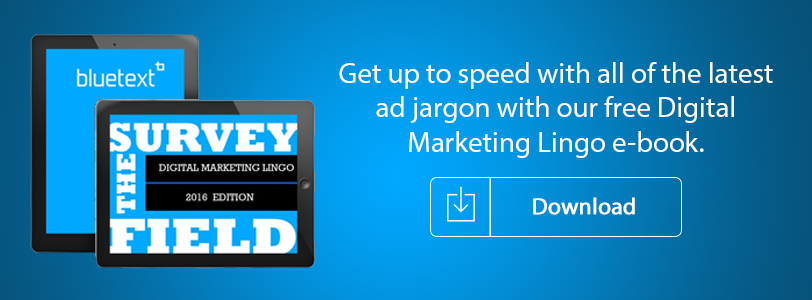Re-targeting campaigns that reach across platforms and devices allow marketers to reach the same prospect as they move across the web, social networks, and mobile devices, creating a new level of engagement and interaction based on data. Understanding the best ways to implement a successful re-targeting strategy can result in dramatic improvements in customer conversion. When done poorly, you run the risk of annoying target audiences with constant messages that do not resonate. When done right, they can go a long way toward driving personalized engagement.
By collecting anonymous information on user behavior and intent, brands are able to convert prospects by engaging them with the right creative and messaging at the right time. By simply placing a short snippet of code, marketers can turn valuable customer data into actionable advertising strategies in real-time.
With that in mind, here are our top four tips for an effective re-targeting strategy that will deliver the results that brands need for a successful campaign:
Pick the Best Platforms. As mobile devices and social media become the dominant platforms for consuming news and information, incorporating the right channels into a campaign is critical. Social networks attract engaged consumers and give brands a direct line to those prospects. Re-targeting on social lets you take advantage of native tools such as shares, likes, and comments to further expand your reach.
At Bluetext, we often recommend Facebook for B2B clients and tend to shy away from Twitter, where users are more interested in entertainment, sports and politics as opposed to business issues. To get the most out of Facebook campaigns, test messaging and creative on smaller subsets of viewers to understand which is going to produce the best engagement. We like to test variations on headline copy, CTA buttons, offers and creative concepts to make sure we are optimizing for the right ads.
Don’t Neglect Mobile. Mobile traffic has surpassed desktop for most brands. There are now more opportunities to leverage retargeting on mobile to reach these prospects. With mobile retargeting, advertisers can retarget desktop visitors as they browse across social networks on their mobile devices or retarget mobile site visitors as they move to desktop computers to research larger purchases. One study found that, on average, AdRoll customers who include a mobile element to their retargeting campaigns receive a boost of nearly 25 percent in clicks and nearly 10 percent more conversions.
Personalize the Experience. While it’s especially important to reach the right user at the right, it’s not always obvious how to do that. Here are three categories of segmentation that marketers can identify to reach their audiences through mobile retargeting and personalization throughout the buyers’ journey:
Level of intent. A visitor who has checked out a half-dozen pages is obviously more valuable than one who has bounced after 10 seconds. When you see a level of interest, focus on that visitor.
Products viewed. When a visitor views a product or services page, make sure your messaging is focused on that product. You already have them half-way down the sales funnel, so don’t try to force them back up again.
Those who have converted. Just because someone has already been a customer doesn’t mean you should cut them out of your campaign. Enlist them instead into a loyalty campaign that can help validate your brand for other prospects or else offer them additional products or services that complement what they have already purchased.
Looking for agency help? Contact us
A lot happens every 60 seconds online across digital platforms. In fact, a staggering amount of posts, uploads and emails take place in the space of a minute – every minute of every day. By looking at this data in detail, and comparing trends over the past three years, marketers can glean a lot of useful insight as to where to focus their brand’s attention when developing media programs – whether for specific targeted campaigns or for ongoing outreach.
A collection of these stats across the most important platforms was recently published by SmartInsights, and it reveals some significant trends. First and foremost, the 800 pound gorilla platform in terms of activity isn’t Twitter and it isn’t email. It’s Facebook. While there are nearly 450,000 Tweets every minute, there are 3.3 million Facebook posts in that same amount of time. In fact, if you said that Facebook literally dwarfs the other contenders, that would be accurate.
 Except when it isn’t.
Except when it isn’t.
As the stats show, the outlier that is the largest by far is What’sApp, the free cross-platform app that can do just about what every other app does, and encrypt it in the process – with more than 29 million messages sent every minute. It’s widely popular around the globe (although not so much in the United States yet).
And who owns What’sApp? Facebook, of course. See a trend here?
60 Seconds Online: Where to Focus?
So where to focus your media campaigns? Look at some of the trends for what’s growing the fastest, and what’s being left behind. For example, Twitter’s 2014-2015 growth line came way down for 2016. Yes, there are more Tweets than a year ago, but not by much. Facebook shows no growth from 2015 to 2016 – which could mean that it has reached its upward potential. On the other side of the spectrum, YouTube and Instagram have increased their activity significantly.
Let’s not forget – Facebook also owns Instagram, while Google owns YouTube. So the upstarts are really just growth opportunities for the giants who continue to battle it out for dominance.
What does all of this mean for marketers? We tell our clients to look at where the growth is, not what was hot two years ago. Twitter is great for sports, entertainment and politics, but not so strong for b2b marketing. Instagram, on other hand, is expanding its reach across demographics, and can reach new target audiences that may have not been a focus of previous campaigns.
Thinking about your marketing and media mix? Contact Bluetext
So, you want to sell to the federal government?
Good. Every year, Uncle Sam and his army of acquisition specialists have money to spend to achieve the critical missions of the federal government. In 2014, the most recent data available, the federal government spent nearly half a trillion dollars on contractors.
But there’s still another question left.
Who are you selling to? And I don’t mean which agency or which department. I mean, who?
Every contract issued by the government has a signature on it, an actual person who has selected your company to provide a product or service. Behind the signature are a small group of influencers. So, of that half-trillion dollar enterprise, your opportunity probably has been shaped by fewer people than are on an NFL roster.
So we ask again, who are you marketing to? Are you marketing to The Government or are you marketing to those who matter?
Why Personas Matter
Federal contracting is its own subspecies of marketing. We don’t have the intense feedback cycles or as many point-of-sale validations.
At Bluetext, we’ve helped dozens of clients reach the right government customers with carefully designed strategy backed by creative that makes an impact. It’s not always the same as business-to-business marketing or business-to-consumer, but one area that never changes is persona creation.
Why?
The government is not a single entity. It comprises agencies and departments, which in turn comprise directorates and activities and program management offices and thousands of personnel who play a role in acquiring products and services on behalf of the government.
How you reach them all won’t be the same. The avenues available to market to a program manager in the access-controlled world of the Intelligence Community, for example, won’t be the same as those available to reaching a director at the National Institutes of Health. Their missions aren’t the same, their needs aren’t the same, and their pain points aren’t the same.
Even within your target opportunity, your approach must vary.
Unlike traditional commercial services marketing, where you may aim for a thousand buyers of a million dollar contract, in federal marketing you’re more frequently aiming for one sale of one 100 million contract influenced by a dozen people. Not only does the persona exercise of understanding who your buyer is matter in fed tech, it matters even more.
Government Personas, in Four Broad Strokes
Directors and Deputy Directors and High Ranking Government Executives
This is typically the big ideas crowd. They’re usually looking for what’s next. Their interest is less day-to-day and more focused on how to better achieve their agency’s mission. Major changes begin at this level, whether it’s a product like a weapon systems or the federal cloud-first mandate, which has reshaped federal IT since its issuance by the then Chief Technology Officer of the United States. In the Intelligence Community, the largest IT transformation in its history began as a plan issued from the Director of National Intelligence.
Be bold and be visionary. If you want to radically change the government’s mindset, this is where you enter the bloodstream. Personnel in these positions aren’t always technically savvy and often have a more generalist approach to their departments, but they’re always eager to find the next great idea. They’re intensely focused on mission achievement, so help them understand how your solutions helps them better achieve the department’s goals.
Contracting Officers & Program Managers
What is a contract for your company is a career decision for contracting officers (COs) and program managers. On most acquisitions, the PM and the CO (or KO, as it’s often abbreviated, particularly in defense) are the most important decision maker. The program manager will be responsible for oversight of all the requirements in the proposal and of its execution once underway. The CO/KO can later modify the contract to add scope.
While PMs and COs appreciate the big idea, they are also intensely interested in the nuts and bolts and your capability to deliver. Every contract is an act of trust between these two positions and your company. These are experienced government personnel with whom you’ll want to build a long-term brand relationship. Depending on the size of the contract, they may not be subject matter experts in all technologies involved, but will likely understand enough to separate contractor-speak from actual capability.
Acquisition Influencers
For competitive bids, acquisition is done through an evaluation board which helps advise the source selection authority on its choice. Acquisition influencers are often subject matter experts and will be interested in the details. While their interest is in the proposal before them, your marketing should include this group as well. Are there third-party validations you can include to bolster your technical credibility, such as CMMI appraisal or AWS or Microsoft organizational certifications? Is your accounting system approved by a government auditor? Can you demonstrate applied expertise in your area of work, through white papers and blog posts? The big idea is great, but this is the group that will pop your marketing balloon if your big idea is all hype and no substance.
End Users
The role of a federal contractor is never simply IT for IT’s sake or product for product’s sake. It’s about empowering the end-user to achieve agency mission. And while the end-user, be it a help desk technician, a service member or a scientist, won’t sign a contract, their opinion of your product or service, particularly once it’s in use, will heavily influence whether it continues to be in use. Prior to acquisition, a groundswell of support could be cause for a pilot program. Market to the end-user’s pain points, rather than a technology-first view.
Every contract is different and Bluetext has helped dozens of clients craft specific marketing strategies by agency and by opportunity.
But like all marketing, it doesn’t just start with the what, it starts with the who!
It’s October. That means CyberSecurity Month. Unfortunately, the breaches are getting more severe, with global companies dominating the headlines. So what should companies do for CyberSecurity month?
I am not a cybersecurity technical expert, but my company does have a lot of experience working with cybersecurity software and services organizations to help them drive brand awareness and visibility. I am not here to educate on the right technical architecture or newest solution that should be employed, but instead list several ideas that marketers of cybersecurity companies can do to differentiate in a very crowded market.
- Don’t Rely on Just Words to Differentiate. Visual storytelling to create an attitude can help a company stand out from the crowd. Our team had the opportunity to work with Sourcefire twice to rebrand the company. The second time we created a series of animated brand elements to represent their key areas of focus and differentiators that you can see on their website today at www.sourcefire.com. Things turned out pretty well for Sourcefire, as they were acquired by Cisco in October 2013 for close to $3b.

- Attack Vertical Markets Aggressively. We recently completed an exciting project with FireEye, one of the most successful cybersecurity companies of 2014, to create vertical focused videos that target specific cyber challenges found across key verticals. The videos, built in a 3-D world, focus on the concept of “We Don’t Blink” and visually tell the story about how the company is re-imagining security.
- Take the Message to Your Customers. There is a growing challenge, especially across the public sector market, where potential customers are not going to events and therefore cannot learn about the solutions that vendors are bringing to market. For Intel and McAfee we designed a virtual Federal agency environment called www.futureagency.com, so that prospective customers and partners could learn directly from their thought leaders in an engaging digital environment.
- Take on Your Competition, and Have Fun Doing It. While this example is not cybersecurity related, many cybersecurity marketers face a similar challenge as Citrix did when they hired us a few years ago to take on their largest competitor. Their solution was better, but they were getting out marketed. So we launched the Rumble In the IT Jungle, a channel driven campaign to demonstrate their product superiority in a bold way – check out http://www.rumbleintheitjungle.com/game/boxing.html
When you are competing in a crowded market, it is not enough to say that your product or service can “out feature” the competition. You need to get creative. You need to get bold. And you need to get moving fast, as the company just down the street is already thinking of their next move.
It is not hard to quickly discover, when sitting down with a client or prospect, when they feel that they are not executing efficiently. A few simple questions and they get that look indicating that they know they need help. This blog post is not another list to make you feel badly about your marketing efforts. This is a list of 10 signs that you are doing marketing right. This is by no means an exhaustive list, and is in no particular order, but hopefully when scanning you can mentally check off a handful of these to show you are taking your marketing efforts in the right direction.
- You have an editorial calendar to align marketing efforts for thought leadership, product launches, news, events, and other corporate activities. An editorial calendar helps deliver a consistent message across all channels.
- You are part of the right conversations. Conversations about companies, products, services, technologies, etc. are happening everywhere. It is important to be part of these.
- Social media is integral to your marketing operations.
- When a prospect visits you at an event, they get the same brand look/feel/attitude from your booth as when they visit your website or scan your social properties.
- Your website is responsive, and you are starting to think of the mobile user experience first. The trend is your friend here – several recent studies show that more than half of web traffic is now coming from mobile.
- You “own” your website, and
don’t need to rely on IT or an outside vendor for consistent updates. - You are leveraging Google Analytics to ensure website content is most effectively displayed to deliver a solid experience for a variety of target personas.
- You lead your business or marketing reviews with actual statistics on your results pulled from various tracking systems.
- You listen to your customers. They know what they want and can be a fickle bunch across any industry.
- Your brand tells a story. From the logo to the look to way your employees talk about you company, everything is aligned and powerful.
This list may be missing many tell-tale indictors, but it’s a good place to start. Please feel free to throw out other ideas, and we will add to this on a regular basis as markets and marketing efforts continue to diversify.
Last week it was announced that software company Synopys would acquire Cigital, a leading provider of software security services to help software developers build security into their application development process.
Here is the news:
http://www.darkreading.com/perimeter/synopsys-expands-software-security-with-cigital-codiscope-acquisitions/d/d-id/1327434
In 2015, following an exhaustive search Cigital selected Bluetext for a full scale rebranding effort, including logo, corporate identity, and fully responsive website.
At the time, Cigital’s challenge was a common one we hear from many of our prospects. To paraphrase, “our services and people are so far superior to our main competition, but our brand is holding us back and we are getting out marketed.”
This assignment was directly in our sweet spot.
We worked with the Cigital team to create a powerful brand that was differentiated and visually appealing to send a message to the market that things are different at Cigital and now is the time to take notice. The rebrand created a swagger for the company that clearly led to success as judged by last week’s news.
We were not specifically hired with the assignment of positioning the company for sale. But this is another instance in a long line of rebrand efforts, including Acentia, Altimeter, Force3 and several others, where the company successfully sold shortly after our rebranding effort.
Every client has a unique challenge.
Rarely does a client call saying that they want to sell and need to rebrand now. But when engaging with a client, it is always in the back of our minds. Our goal is to take a seat at the table with our clients, understand their unique challenges and ultimate goals, and help them execute a campaign to achieve this goals in the most efficient manner possible.
Kudos to Cigital, Jim Ivers and the entire team. We could not be more proud of the work we did to help successfully position you for this exciting news. To read more about our solution check out our Cigital case study. To learn more about the importance of a strong brand, read our latest:
When I meet someone and they ask about Bluetext, I often reply with a simple “Bluetext is one of the top branding and marketing agencies in Washington, D.C.” That usually leads to a conversation about our team, our services, our clients, and eventually their needs and challenges. People generally understand branding and marketing, and therefore are able to talk about their business challenge in the context of the services we deliver.
I was at a dinner last week with a group of agency leaders from the top branding and marketing agencies in Washington and something that someone else said really struck a chord with me. He talked about solving problems and addressing challenges for his clients. As a leading marketing agency, I believe our clients think of us in a similar manner. We are more than a branding firm. We do more than design and build award-winning websites. We do more than execute PR and content marketing campaigns for our clients. At the end of the day, every company has some sort of marketing challenge they are trying to overcome. At Bluetext, that is what we do for our clients. We solve their challenges through a mix of strategies and tactics, and there is no one size fits all approach.
As you start to think about 2017, I would strongly suggest not specifically thinking do I need a new website or do I need to get more articles, but instead think what are the challenges my business faces and what type of agency is required to solve them. Does that agency have the creativity, passion and expertise to get their hands dirty and help me achieve my goals? Does that agency have the resources to think about new channels? A PR firm will tell you that you need more PR. A website agency will tell you need a new website. At Bluetext, we will analyze your challenge and recommend a campaign, solution or strategy to help you achieve your business goals. In my view, that is what a top marketing agency does. To learn more about what makes us a top agency, reach out today.
When people ask me about Bluetext, I often find myself calling us of the region’s top B2B marketing firms. We work with world class global enterprises. We are on the cutting edge of branding trends and focused on leveraging emerging marketing channels. And we have a world class team of people focused on delivering great results for our clients. So here is my take on what makes us one of the top B2B marketing firms:
- A top B2B marketing firm works across a wide variety of industries. In my view, focusing on just a few industries can be limiting and lead to tired tactics. Instead, taking the learnings from some industries and applying them into adjacent markets can be valuable to clients.
- A top B2B marketing firm can tackle a wide variety of marketing assignments, delivering integrated solutions for clients. Clients like integrated service offerings. They like to work with clients who create a strategy then are able to roll it out via many channels.
- A top B2B marketing firm is working at the forefront of emerging delivery channels. See our recent work for Varonis at bluetext.com/varonis
- A top B2B marketing firm gives guidance versus simply taking orders. Challenging assumptions, doing things differently, and looking at ideas through different lenses can be incredibly valuable.
- A top B2B marketing firm starts with goals versus focusing on channels. Understanding where a client wants to go before deciding how to get there can be quite valuable.
- A top B2B marketing firm should have a seat at the table with you during key strategic meetings.
- A top B2B marketing firm should push your internal team to think beyond traditional channels and programs to reach prospects in new and unique ways.
- A top B2B marketing firm is part of the community and recognized for its great work
- A top B2B marketing firm is able to adjust strategies mid-course.
- A top B2B marketing has a client roster that you immediately recognize.
So that is my list. That is how I define a top B2B marketing firm. What did I miss? Please share other ideas and I can update the post in the future. And for more insights on B2B marketing, reach out to Bluetext today:

Attention all you marketers out there…ever sat in a meeting not wanting to raise your hand to ask someone for clarification on what they mean? Concerned that your colleagues or manager will think less of you? Gearing up for your next marketing campaign and need to include some new thinking?
Let’s face it – you are not alone. No one wants to be that person who raises their hand in those situations.
The world of digital marketing is moving very fast with new terms and concepts emerging everyday. From SERP to lead scoring to SEO to responsive design, it is getting harder to keep up.
If you are p
The marketing and communications business is at a bewildering junction, with two simultaneous models vying for brains and assets. Most marketing campaigns look at personas of their buyers and determine what is the best path to the promise land.
Bottom-up marketing is a concept with no single definition, but a few distinct components that set it apart from traditional top-down marketing strategies. Unlike traditional marketing, where executives create a marketing plan and a strategy to promote a company’s products and services, bottom-up marketing is mainly driven by the employees of a company. Employees recognize one specific customer need the company can meet and create a marketing strategy around that single idea.
A great example is Dropbox. Dropbox rose to $10 Billion valuation through its connection with the end user. Dropbox focused on providing the masses of end users (both personal and professional) a block of cloud storage that elegantly and brilliantly stayed synchronized on your local hard drive and your collaborative peers hard drives. Dropbox didn’t sell the CFO on cost benefits and the CTO on the power of the cloud. Dropbox simply delivered a great service with a viral approach to a roll out that created an ever growing desire for more and more storage in the cloud. In the end so many businesses had hundreds and thousands of BYOS (bring your own storage) and they needed to take control of this corporate intellectual property, and reached out to Dropbox for the suite of tools and administration to make managing the cloud instances so much more manageable, secure, and scale-able.
The top-down marketing plan contains four principal sections: situation analysis, marketing objectives, marketing strategy, and tactics. A company’s marketing objectives should be logical deductions from an analysis of its current situation, its prediction of future trends, and its understanding of corporate objectives. In the end, a top down marketing approach focuses on the top executive personas most often. The constituent who controls the purse strings. All SaaS and Enterprise technology companies are always looking for the high and mighty inside an enterprise that has the power to sign on the dotted line. Top down marketing focuses its message and offers so they should relate to the needs of specific target markets and specify sales objectives. Marketing-target objectives should be specific, quantitative, and realistic. The messaging of a top down approach often caters to the fears and dreams of that influential executive.
A great example of top-down marketing is the hyper growth industry of cyber-security. Every executive fears waking up to their employer’s brand on the headlines of major media outlets next to the word breach or hacked. Years and years of customer loyalty and brand preference can be washed away overnight. Cyber security companies are preying on these executives with a top down marketing approach that strikes fear into their hearts and minds and forces them to strike the check and implement countless solutions to help them sleep easy at night as they try to appease key constituencies including public markets.
Does your business ever wonder how to harness its precious marketing and communications budget to achieve its short and long term goals? Contact Bluetext. We are a top marketing agency that delivers results whether your campaign is focused top down or bottom up. Let us use our proprietary methodologies to define the right method, and then develop the campaigns, platforms, and content assets to knock the cover off the ball.



